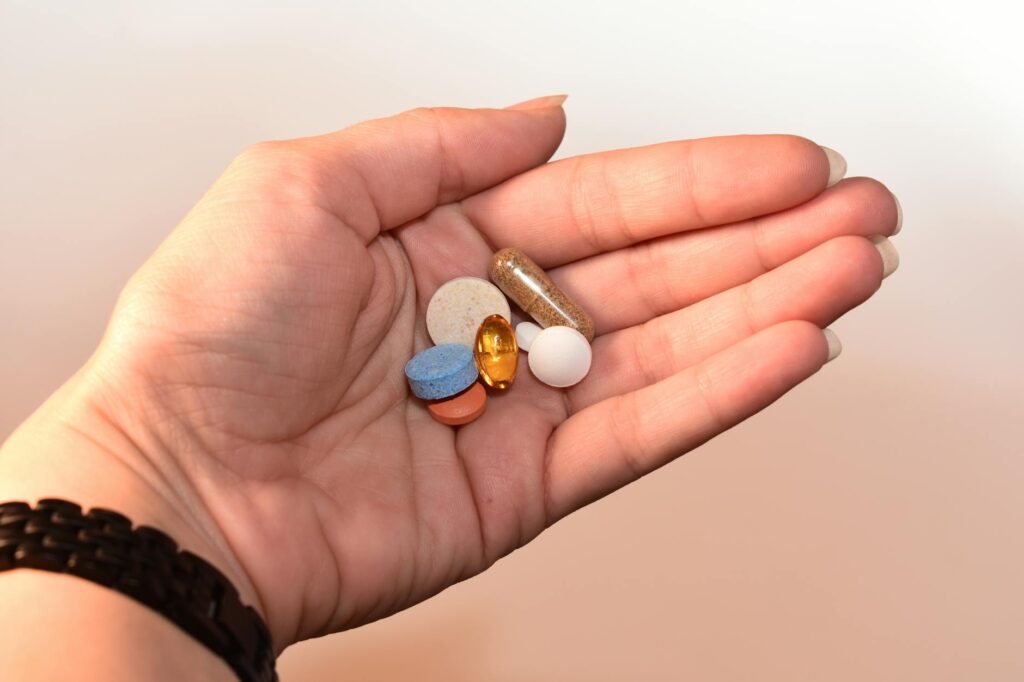Understanding Mood Stabilizers
Mood stabilizers play a crucial role in the management of bipolar disorder, a condition characterized by extreme mood swings that range from manic highs to depressive lows. These medications help stabilize mood, reduce the intensity of mood swings, and prevent manic and depressive episodes. Let’s explore how mood stabilizers are used in managing bipolar disorder and discuss some common medications used in treatment.
Managing Bipolar Disorder
Bipolar disorder is a chronic mental health condition that requires ongoing treatment and management. The primary goal of treatment is to achieve mood stability and prevent relapse. In addition to medication, other therapeutic approaches, such as psychotherapy and lifestyle modifications, may be recommended to support individual well-being.
Common Medications
Several medications are commonly prescribed as mood stabilizers for the treatment of bipolar disorder. Here are three examples:
Lithium: Lithium is a widely used mood stabilizer that has been approved by the FDA for the treatment tof mania and bipolar disorder [2]. It works by altering the balance of certain chemicals in the brain, specifically targeting and stabilizing mood fluctuations.
Valproic Acid: Valproic acid is another commonly prescribed mood stabilizer. It functions as a mood stabilizer and antiepileptic agent by enhancing the inhibitory effect of gamma aminobutyric-acid (GABA), reducing repetitive neuronal firing, and balancing inhibition and excitation within neuronal networks. This helps to regulate mood and prevent extreme shifts.
Carbamazepine: Carbamazepine is an anticonvulsant medication that is also used as a mood stabilizer for certain individuals with bipolar disorder. It works by inhibiting cAMP accumulation, which leads to the downregulation of the inositol transporter [3]. By modulating neurotransmitter activity, carbamazepine helps stabilize mood and reduce the frequency and intensity of mood swings.
It’s important to note that the choice of medication may vary depending on the individual’s specific symptoms, medical history, and response to treatment. Determining the most appropriate medication and dosage is a collaborative process between the individual and their healthcare provider.
When it comes to managing bipolar disorder, it’s crucial to follow the prescribed treatment plan and regularly communicate with healthcare professionals to monitor progress and make any necessary adjustments. In addition to medication, other aspects of self-care, such as maintaining a stable routine, managing stress, and getting adequate sleep, can also contribute to overall well-being.
For more information on drug and alcohol rehabilitation, visit our article on is drug and alcohol rehab free?.
Mechanisms of Mood Stabilizers
Mood stabilizers are medications commonly prescribed to manage bipolar disorder and stabilize mood fluctuations. Some of the most widely used mood stabilizers include lithium, valproic acid, and carbamazepine. Understanding how these medications work can provide insights into their effectiveness in treating mood disorders.
Lithium’s Action
Lithium, a widely prescribed mood stabilizer, exerts its therapeutic effects by downregulating polyphosphoinositide signaling. This downregulation inhibits neuronal excitation, which contributes to its benefits as a mood stabilizer [3]. By modulating neurotransmitter activity, lithium helps to balance the excessive fluctuations in mood often experienced by individuals with bipolar disorder.
Valproic Acid Function
Valproic acid is another mood stabilizer commonly used in the treatment of bipolar disorder. Its mechanism of action involves enhancing the inhibitory effect of gamma aminobutyric acid (GABA), a neurotransmitter that calms excessive neuronal firing. By reducing repetitive neuronal firing and balancing inhibition and excitation within neuronal networks, valproic acid helps stabilize mood and prevent mood swings.
Carbamazepine’s Impact
Carbamazepine, another mood stabilizer, functions by inhibiting the accumulation of cyclic adenosine monophosphate (cAMP). This inhibition leads to the downregulation of the inositol transporter, which plays a role in neuronal excitation. By modulating the balance between inhibition and excitation, carbamazepine helps stabilize mood and prevent manic episodes in individuals with bipolar disorder.
Understanding the mechanisms of action for these mood stabilizers provides valuable insights into how these medications work to alleviate symptoms associated with bipolar disorder. However, it’s important to note that these medications should only be prescribed and taken under the guidance of a healthcare professional to ensure proper dosage and minimize potential side effects.
To learn more about the effects of drugs on brain chemistry and the risks associated with their use, continue reading our sections on drug effects on brain chemistry and risks and consequences.
Drug Effects on Brain Chemistry
When it comes to understanding the effects of drugs on brain chemistry, two important aspects to consider are neuronal activation and disruption of communication.
Neuronal Activation
Certain drugs, such as marijuana and heroin, can activate neurons by mimicking the chemical structure of natural neurotransmitters in the body. This leads to abnormal messages being sent through the network of neurons, resulting in altered brain chemistry. The neurons become overstimulated, which can have profound effects on an individual’s thoughts, feelings, and behavior.
Disruption of Communication
Many drugs, such as amphetamines or cocaine, can disrupt the normal communication between neurons in the brain. They achieve this by either causing neurons to release abnormally large amounts of natural neurotransmitters or by preventing the normal recycling of these brain chemicals. As a result, the communication between neurons becomes distorted, leading to significant alterations in brain chemistry and function [4].
These disruptions in neuronal communication can have wide-ranging effects on various brain areas and circuits. One example is the reward circuit in the basal ganglia, which plays a crucial role in motivation, pleasure, and reinforcement. Drugs can alter this circuit, leading to compulsive drug use and addiction.
Pleasure and Dopamine Release
One of the key factors in the effects of drugs on brain chemistry is their impact on the release of dopamine, a neurotransmitter associated with pleasure and reward. Drugs can produce much larger surges of dopamine than natural rewards, reinforcing the connection between drug consumption, pleasure, and external cues linked to the drug experience. This can lead to the brain seeking drugs at the expense of other healthier goals and activities.
It’s important to note that these drug-induced surges of chemical signaling compounds, including dopamine, can disrupt the brain’s natural balance. They can also alter brain areas necessary for life-sustaining functions, contributing to the compulsive drug use and addiction seen in individuals struggling with substance abuse.
Understanding the effects of drugs on brain chemistry is crucial for comprehending addiction and its consequences. By gaining insight into neuronal activation, disruption of communication, and the role of dopamine, we can better comprehend the complex mechanisms underlying drug addiction and develop effective strategies for prevention and treatment.
Pleasure and Dopamine Release
To comprehend the impact of drugs on our brain and the feelings of happiness they can induce, it is essential to explore the brain’s reward center and the role of dopamine.
Brain’s Reward Center
The brain’s reward center consists of specific regions, including the ventral tegmental area (VTA), nucleus accumbens (NAc), and substantia nigra (SN). These areas play a crucial role in experiencing pleasure and reward. When stimulated, they release dopamine, a neurotransmitter associated with feelings of pleasure and reward. This mechanism reinforces life-sustaining behaviors by creating a pleasurable sensation when necessary behaviors occur.
Role of Dopamine
Dopamine is a neurotransmitter that plays a significant role in the brain’s reward system. It is responsible for transmitting signals between neurons, regulating movement, motivation, and pleasurable sensations. Natural rewards, such as eating or engaging in enjoyable activities, trigger the release of dopamine, reinforcing those behaviors. However, drugs can artificially stimulate the release of dopamine more intensely and efficiently than natural rewards, leading to a surge in dopamine levels in the brain’s reward center.
Drugs, including opiates, alcohol, nicotine, amphetamines, and cocaine, create a neurochemical reaction in the brain that significantly increases the amount of dopamine released by neurons in the reward center. This dopamine surge contributes to the intense pleasurable feelings associated with drug use.
The pleasurable effects derived from drug use can be so powerful that the brain begins to associate drug consumption with pleasure and external cues linked to the experience. This connection can lead the brain to prioritize seeking drugs over other healthier goals and activities, potentially leading to addiction and compulsive drug-seeking behavior.
Understanding the brain’s reward center and the role of dopamine provides insights into why drugs can have such a profound impact on our feelings of happiness and pleasure. The surge of dopamine associated with drug use reinforces the connection between drugs and pleasure, which can lead to a continued desire for drugs at the expense of other important aspects of life. It is important to recognize the risks and consequences associated with drug use, including addiction and potential health issues, in order to make informed decisions.
Drugs and Neurotransmitters
When it comes to the effects of drugs on the brain, a key aspect to consider is their impact on neurotransmitters, the chemical messengers responsible for communication between neurons. Drugs can influence neurotransmitter activity, leading to surges of chemical compounds and affecting the release of specific neurotransmitters, such as dopamine.
Surges of Chemical Compounds
Drugs, such as marijuana and heroin, have the ability to activate neurons by mimicking the chemical structure of natural neurotransmitters in the body. This can result in abnormal messages being sent through the neural network, disrupting normal communication between neurons.
These substances can cause neurons to release abnormally large amounts of natural neurotransmitters or prevent the normal recycling of these brain chemicals. This disruption in neurotransmitter activity can further contribute to the distorted communication between neurons.
Dopamine Release
One neurotransmitter of particular importance when considering the effects of drugs on the brain is dopamine. Dopamine is associated with pleasure and reward and plays a crucial role in the brain’s “reward center.” This center includes areas such as the ventral tegmental area (VTA), nucleus accumbens (NAc), and substantia nigra (SN).
Drugs can artificially stimulate the release of dopamine in this reward center, creating a more intense and efficient effect compared to natural rewards. This heightened release of dopamine reinforces the connection between drug consumption, pleasure, and external cues linked to the drug experience. Consequently, the brain is driven to seek drugs at the expense of other healthier goals and activities.
It’s important to note that drugs produce much larger surges of dopamine than natural rewards, which can lead to the brain seeking drugs as a primary source of pleasure. This reinforcing effect can contribute to the addictive nature of certain substances [4].
Understanding the impact of drugs on neurotransmitter activity, particularly the release of dopamine, provides insight into the neurochemical basis of drug-induced pleasure and addiction. By examining these mechanisms, researchers and healthcare professionals can work towards developing effective strategies for prevention, treatment, and recovery.
Risks and Consequences
While drugs may provide temporary feelings of euphoria or pleasure, it is important to recognize the risks and consequences associated with their use. The use of drugs can lead to addiction, physical and mental health problems, strained relationships, and a decline in overall well-being. It is essential to understand that the happiness derived from drugs is fleeting and can ultimately hinder one’s ability to experience genuine and lasting happiness.
Addiction and Health Issues
One of the most significant risks of drug use is the potential for addiction. Drugs can alter important brain areas necessary for life-sustaining functions and drive compulsive drug use that characterizes addiction. The reward circuit in the basal ganglia, a key brain area affected by drug use, plays a crucial role in reinforcing drug consumption and pleasure. The brain’s association between drug consumption, pleasure, and external cues linked to the experience can lead to a pattern of seeking drugs at the expense of other healthier goals and activities.
Furthermore, drug use can have detrimental effects on both physical and mental health. Drugs can activate neurons in the brain by mimicking the chemical structure of natural neurotransmitters, leading to abnormal messages being sent through the network. The disruption of normal brain chemistry can result in a range of health issues, including cognitive impairments, cardiovascular problems, respiratory issues, and increased susceptibility to infections and diseases.
Impact on Well-Being
Using drugs can have a profound impact on an individual’s overall well-being. While they may provide temporary feelings of happiness or pleasure, these effects are often short-lived and accompanied by negative consequences. The pursuit of drug-induced happiness can lead to a decline in overall life satisfaction and hinder one’s ability to experience genuine and long-lasting happiness.
It is important to recognize that there are alternative paths to happiness that do not involve drugs. Practicing mindfulness and gratitude, engaging in regular physical activity, maintaining a healthy and balanced diet, nurturing supportive relationships, seeking professional help and therapy when needed, engaging in meaningful activities and hobbies, setting and working towards personal goals, developing healthy coping mechanisms, managing stress and anxiety effectively, celebrating small victories, and maintaining a positive outlook and mindset are drug-free approaches that can bring about long-term fulfillment and contentment.
Choosing a drug-free path to happiness promotes overall well-being, allows for personal growth, and fosters genuine connections with others. It is essential to prioritize one’s health and happiness by seeking healthier alternatives to drugs and understanding the potential risks and consequences associated with their use.
Resources
- [1]: https://www.camh.ca/en/health-info/mental-illness-and-addiction-index/mood-stabilizing-medication
- [2]: https://www.nimh.nih.gov/health/topics/mental-health-medications
- [3]: https://www.ncbi.nlm.nih.gov/books/
- [4]: https://nida.nih.gov/publications/drugs-brains-behavior-science-addiction/drugs-brain
- [5]: https://www.hazeldenbettyford.org/research-studies/addiction-research/drug-abuse-brain
- [6]: https://www.perennialrecovery.com/blog/how-to-be-happy-without-drugs
Did You Know? According to WHO, one out of every seven teens is struggling with some sort of mental illness.










